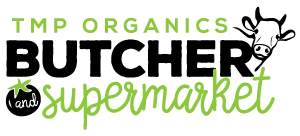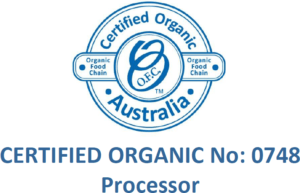Arabella Forge takes a look at where milk comes from, its health benefits and why organic milk from pasture-fed animals is the best there is.
Since the beginnings of agriculture 10,000 years ago, milk-producing animals such as cows, sheep and goats have been an invaluable resource. Milk was known as a nutrient-dense, complete and natural wholefood that contained important nutrients. It could be drunk fresh but usually it was fermented to make clabbered (curdled or soured) milk, yoghurt, kefir or cheese. Without refrigeration, milk would naturally sour so it required fermentation to last for longer periods of time. These natural fermentation processes also increased the milk’s levels of healthy bacteria and several vitamins and minerals, creating an even more nutrient-dense food product.
At the turn of the twentieth century, as many people began migrating to the cities and western populations expanded, the demand for milk continued to grow. To produce plentiful milk on small areas of land, farmers began feeding their cattle various food scraps, brewery waste and grain supplements to increase milk production. This unhealthy and unnatural diet for the cows caused the milk to foul and many people became ill from food-borne diseases. In addition, the longer transport times and a lack of understanding of basic sanitation practices caused milk to be more unstable and added to the risk of contamination.
Modern food processing methods since developed to ensure the safety and standardisation of all dairy foods. Stainless steel milk trucks, refrigeration, homogenisation, fat-reduction and heat-treatment pasteurisation ensure that milk is now safe, convenient and easily available – but it is not quite the same food that our parents or grandparents used to consume. As with many industrialised foods, milk now comes to us over greater distances and with less nutritional value.
Dairy is big business
The Australian dairy industry is one of Australia’s major rural industries with an annual production value of $3.4 billion. Each year 45 per cent of the total milk produced in Australia is exported, with the export industry currently valued at $2.9 billion annually. Of the milk that is used within Australia, 33 per cent goes to cheese making, 25 per cent to skim milk powder and butter and 24 per cent is consumed as milk. There are currently 7924 dairy farms in Australia with an average herd size of 220 cows.
In 2000, deregulation of the dairy industry forced the Australian markets to become more internationally competitive. Prior to this, milk pricing and supply in Australia was regulated by a combination of state and federal policies. The industry now works in an entirely deregulated environment where international prices determine the price received by farmers for their milk. Australian dairy farmers currently receive a low price (39c/litre) by world standards and therefore have to run very efficient production systems.
The supermarket price war
The recent discounting on milk process by chain supermarkets could potentially cause irrevocable harm to the dairy industry. In March 2011, Coles cut its price of home-brand milk to $1.00 per litre to compete against its labelled brands. Woolworths, Aldi and Franklins matched the price on their home-brand milks as well. This discounting is predicted to incur an erosion of the branded milk product, which till cut processors’ margins and ultimately cause prices at the farm fate to fall.
Dairy cooperatives such as Norco, which represents 165 dairy farms in Queensland and northern NSW, have claimed that this continued discounting could potentially trigger ‘the possible demise of the dairy industry’. Producers for Norco receive 54.11c/litre from the farm gate. Norco claims that this is just four cents above what it takes to break even. If the milk discounting was passed back down the chain to farmers, Norco says, they would get about 31c/litre – far less that the break-even milk price. This could cause several farms to close. According to Australian Dairy Farmers vice president Adrian Drury, the price should be set at $1.50/litre from the farm gate to ensure the survival of the dairy industry.
Cow welfare
In recent years concerns have been raised by animal welfare groups about the treatment of dairy cows – in particular, the receding lifespan of an average dairy cow. Dairy cows are now required to produce more milk more rapidly, at a younger age. Consequently, cows burn out faster. Those problems are, of course, likely to be exacerbated by the present price war.
Diet of conventional cows
Most conventional dairy farms practise a combination of pasture-based feeding as well as supplementary feeding in the form of silage, hay, grains and miscellaneous food waste (brewery leftovers and vegetable scraps). No conventional farms operate without some form of supplementary feeding and a small proportion of dairy cattle (four per cent) exists in confinement feedlots without access to natural pastures.
For dairy cows, a diet lacking in natural pastures has been shown to cause various health problems such as bloat or liver abscesses. These need to be treated quickly with medication to avoid severe illness or death. There is also a higher risk of E.coli contamination in the food products from cows that have had a high proportion of grains and food supplements in their diet.
Artificial hormones
Artificial hormones are not given to dairy cows in Australia. The rBST or rBGH – an artificial hormone that stimulates milk production in cows – has been banned from use in Canada, Australia, New Zealand, Japan and all European Union countries. The publicity surrounding the use of rBGH in some parts of the USA has caused many people internationally to choose organic or biodynamic certified milk products to ensure that they are hormone free.
Antibiotics and the organic alternative
The dairy industry routinely uses antibiotics for the treatment of infections and inflammation in cattle. Dairy Food Safety Victoria claims that it frequently conducts tests to ensure that antibiotic residues to do not appear in dairy products. However, the amount of antibiotics used on each conventional farm is at the discretion of the farmer and local vet. Antibiotics are administered via intramammary pathways for the treatment of mastitis, and also topically, intrauterinally and orally (directly or as a feed supplement). In comparison, organic and biodynamic farming methods rely on homeopathic remedies and natural immune-boosting feed supplements to prevent infections from occurring and to treat them naturally when required, with minimal side effects. If a cow on an organic dairy needs to be treated with antibiotics, then its milk is discarded for a specific period during and after treatment.
Conventional milks are watered down
Some conventional milk products in Australia are watered down using a milk solid product called permeate. This is a waste product of dairy production created by removing all the fat and protein through a fine sieve and then concentrating all the remaining materials. In some brands of milk it can make up to 12 per cent of the final product. It is legal to use permeate in all conventional milk brands but it is not a requirement of Australian food labelling laws to feature permeate in ingredients lists on milk labels.
Permeate
Dairy Australia claims that permeate is used to standardise levels of fat and protein in milk products to compensate for seasonal variation (levels of fat will naturally change depending on the season). It also allows them to produce and heavily market a variety of different types of milk (for example, low fat, high calcium, not fat). But most farmers do not welcome the use of permeate in milk products and consider such products a poor substitute for the real thing. Milk processing plants save money by using permeate and reducing the fat content of their milk – the excess cream from milk processing can be used for other products such as butter, skim milk powder, yoghurt and ice cream.
A2 milk
A2 milk is a type of milk identified by its specific beta-casein protein. Dairy milk contains one of two types of beta-casein proteins, either A1 or A2. All sheep, goats and buffalo naturally have A2 beta-casein proteins, but dairy cows can have either A1 or A2.
There is a perception amongst the public that A2 milk is less allergenic than A1 milk is. Anecdotally, many people claim that the milk tastes better and is easier to digest. But scientific studies have shown that beta-casein is one of at least seven proteins in cow’s milk with allergenic significance (alpha-, beta- and gamma-casein, alpha- and beta-lactoglobulin, lactoferrin and transferrin). Hence it is unlikely that a single amino-acid difference in one protein will have a significant effect on overall milk allergenicity.
Reduced fat = reduced beneficial nutrients
Regular milk has between two to four per cent fat and reduced fat milk contains one to two per cent fat. Drinking reduced fat milk is a relatively new phenomenon, which only began during the latter half of the 20th century. Prior to this, all milk contained a minimum of four per cent fat. This was due to skim milk not being available and the preference toward the traditional breeds of cows such as the Jersey, Guernsey and Devonshire. These cows produce less milk but with a higher butterfat content.
Many important nutrients are lost when milk is reduced in fat. Butterfat contains vitamins A and D, needed for assimilation of calcium, and protein in the water fraction of the milk. Butterfat is also rich in short- and medium-chain fatty acids, which stimulate the immune system and protect against disease. These nutritional benefits are not present when the butterfat is removed.
Homogenised milk
Homogenisation is the process whereby the fat particles are broken up and dispersed uniformly so the cream will not rise to the top of the milk. Homogenisation is done for aesthetic reasons in milk production. Anecdotally it has been found that homogenised milk can be difficult to digest. Increasingly, studies are also citing links between homogenised milk and heart disease, type 1 diabetes and some cancers. Most milk, unless labelled otherwise, is homogenised.
Organic/biodynamic milk
The emphasis on healthy pastures and nutrient-dense soils and grasses is one of the key factors pertaining to the added nutrients found in organic dairy products. Organic milk has been found to contain up to 71 per cent more health-promoting omega-3 fatty acids than conventional milk does. It is also a richer source of conjugated linoleic acid (CLA), which has been shown to aid weight loss and protect against cardiovascular disease. Organic milk from pasture-raised cows has also been found to be a richer source of antioxidants such as lutein, zeaxantin and beta-carotene (demonstrated by a slightly yellow-coloured milk and bright orange butter) as well as the fat-soluble vitamins A, D, E and K.
Certified organic milk products do not contain additives or permeate. Hence there is a natural seasonal variation that occurs in the fat composition of the milk. In winter the fat composition can reach up to 4.6 per cent. Organic milk also contains no traces of pesticides, antibiotics or hormones. Many organic farmers also practise salad-bar grazing methods, where cattle are offered a range of fresh grasses and legumes. This provides a variety of nutrients in the cows’ diet, which supports and strengthens their immune systems.
Raw milk
Raw milk is essentially fresh milk – taken straight from the cow and not pasteurised nor homogenised. Increasingly many people are drinking fresh milk instead of pasteurised milk for its added health benefits. The pasteurisation process destroys important enzymes and beneficial bacteria, which aid in the digestion of milk and the assimilation of nutrients. In particular, it contains a natural form of the lactase enzyme, which aids the digestion of lactose present in all types of milk. It also diminishes the content of key vitamins including vitamin C, B12 and B6.
Current food regulations prohibit the sale of fresh milk in Australia. Several side avenues have developed for eager consumers – there are herb shares (where you buy a share in a cow or a farm), milk co-ops and the selling of ‘bath milk’, which is raw milk labelled as unfit for human consumption.
Internationally, raw milk is readily available in mainstream retail markets. For instance, in parts of the USA you can purchase raw milk from wholefoods supermarkets, food co-ops, and via farm gate sales. In New Zealand and many parts of Europe it is sold from farm gates or local co-ops. Italy, France, Switzerland and Slovenia also have milk-o-vats (milk machines) in public places where people can refill their milk bottles with fresh clean milk from local farms.
Yet, in all places where raw milk is safely consumed, it comes from small-scale farms whee the animals are fed a natural diet of pasture and hay. In most cases these are organic or biodynamic farms. History has shown that raw milk can potentially be dangerous if it is sourced from large-scale industrial farms where the animals are fed an unnatural diet of grains, brewery waste or good supplements. Just like any animal food products, the health and lifestyle of the animal will dictate the nutritional quality and safety of the final product. So if you are travelling overseas and are lucky enough to be able to consume fresh milk, make sure that you investigate it source.
Source – Clean Food Organic Magazine


